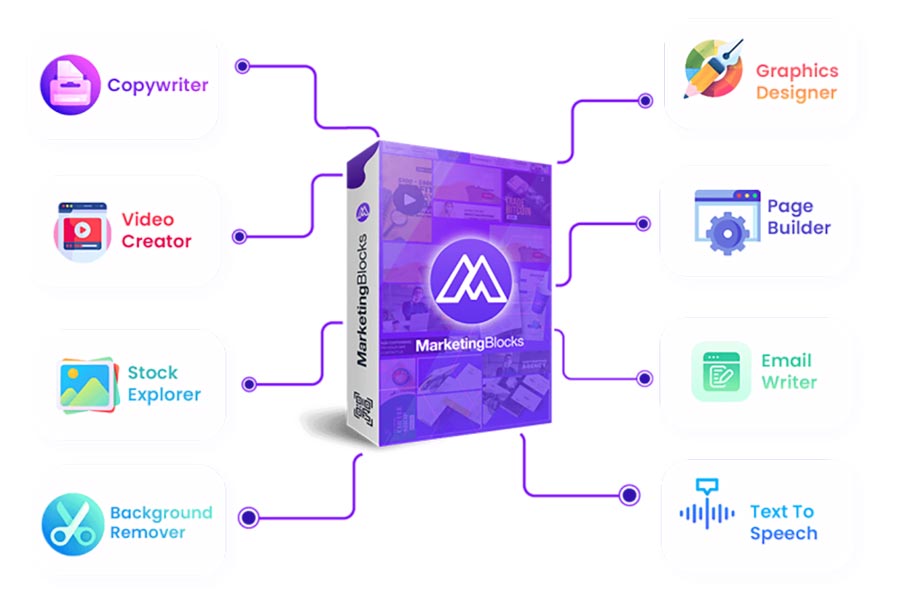The AI Revolution: Transforming Marketing & Advertising

Artificial Intelligence (AI) has revolutionised various industries, and marketing and advertising are no exceptions. With its ability to analyse vast amounts of data and make intelligent decisions, AI has become a game-changer in the marketing landscape. In this article, we will explore the profound impact of AI on marketing and advertising strategies and how businesses can leverage its power to stay ahead in the competitive market.
Personalised Customer Experiences
One of the key benefits AI brings to marketing and advertising is the ability to create highly personalised customer experiences. AI-powered algorithms can analyse consumer data, such as browsing patterns, purchase history, and social media interactions, to understand individual preferences and behaviours. This enables marketers to deliver tailored content, product recommendations, and promotions to each customer, enhancing customer satisfaction and loyalty.
AI algorithms analyse historical data and perform real-time analysis of customer interactions. AI algorithms can dynamically adjust recommendations and content delivery by monitoring and analysing customer behaviour in real time. This level of personalisation creates a seamless and engaging customer experience, increasing the chances of conversion and repeat purchases.
Moreover, AI can take personalisation to the next level by leveraging natural language processing (NLP) and sentiment analysis. AI algorithms can gain insights into customer sentiment and preferences by analysing customer feedback, reviews, and social media conversations. This allows marketers to refine their messaging and offerings further, ensuring that they resonate with the target audience on an emotional level.
To summarise, AI enables marketers to deliver personalised customer experiences by analysing vast amounts of data, adjusting recommendations in real-time, and leveraging NLP and sentiment analysis to understand customer sentiment and preferences.
Efficient Data Analysis
AI algorithms analyse vast amounts of data at an incredible speed, enabling marketers to make data-driven decisions. Businesses can gain valuable insights into customer behaviour, market trends, and campaign performance by leveraging AI-powered analytics tools. This data-driven approach helps marketers optimise their strategies, identify new opportunities, and streamline advertising efforts for better ROI.
AI can handle structured and unstructured data, allowing marketers to analyse various information sources. For instance, AI can analyse customer data from multiple touchpoints, including website interactions, social media engagements, and email responses. This holistic view of customer data provides comprehensive insights into customer preferences and behaviour, enabling marketers to create targeted campaigns that resonate with their audience.
Furthermore, AI algorithms can perform complex pattern recognition and predictive analysis. By identifying patterns in customer behaviour and market trends, AI can help marketers anticipate future outcomes and make informed decisions. For example, AI can identify emerging customer segments or predict the success of a new product launch based on historical data.
Marketers should invest in robust analytics platforms that integrate seamlessly with their existing systems to make the most of AI-powered data analysis. These platforms should provide advanced data visualisation capabilities, allowing marketers to easily interpret complex data sets and extract actionable insights.
In summary, AI enables efficient data analysis by processing vast amounts of structured and unstructured data, providing comprehensive insights into customer behaviour and market trends, and enabling predictive analysis for informed decision-making.
Enhanced Targeting and Segmentation
AI-powered algorithms can segment audiences based on various parameters, such as demographics, interests, and behaviours. This allows marketers to target their advertisements more precisely, ensuring that the right message reaches the right audience at the right time. Businesses can optimise their advertising budgets and achieve higher conversion rates by eliminating wasteful spending on irrelevant audiences.
AI algorithms can analyse customer data to identify common characteristics and preferences among different segments. By clustering customers into distinct groups, marketers can tailor their messaging and offerings to address each segment’s specific needs and interests.
Moreover, AI can help marketers identify micro-segments within larger target audiences. AI algorithms can identify unique subsets within a broader target audience by analysing individual customer preferences and behaviours. This allows marketers to create highly targeted campaigns that resonate with specific customer segments, increasing the chances of conversion and customer satisfaction.
In addition to segmentation, AI can also optimise the timing and placement of advertisements. By analysing historical data and customer behaviour patterns, AI algorithms can determine the most effective channels and time slots to reach the target audience. This ensures that marketers maximise the impact of their advertising efforts and minimize wasted ad spend.
To summarise, AI enables enhanced targeting and segmentation by analysing customer data to identify common characteristics and preferences, identifying micro-segments within larger target audiences, and optimizing the timing and placement of advertisements for maximum impact.
Automated Advertising Campaigns
AI has automated various aspects of advertising campaigns, making them more efficient and cost-effective. AI-powered tools can automatically create and optimise ad copies, select the best-performing ad placements, and adjust bids in real-time to maximise campaign performance. This automation saves time and helps businesses achieve better results with reduced manual effort.
One of the key areas where AI automation has significantly impacted is ad copy creation and optimisation. AI algorithms can analyse historical data and customer preferences to generate highly engaging and personalised ad copies. By leveraging natural language generation (NLG) techniques, AI can create compelling ad copies that resonate with the target audience and drive higher click-through rates.
Furthermore, AI can optimise ad placements by analysing real-time data on ad performance. By monitoring metrics such as click-through rates, conversions, and cost per acquisition, AI algorithms can identify the best-performing ad placements and allocate budget accordingly. This ensures businesses maximise their ad spend return and achieve their campaign objectives.
In addition to ad copy creation and optimisation, AI can automate bid management. By analysing real-time data on market trends, competitor activities, and customer behaviour, AI algorithms can adjust bids in real-time to maximise campaign performance. This dynamic bidding strategy ensures businesses stay competitive in the ever-changing advertising landscape and achieve optimal results.
To summarise, AI enables automated advertising campaigns by automating ad copy creation and optimisation, optimising ad placements based on real-time data, and dynamically adjusting bids for maximum campaign performance.
Chatbots and Virtual Assistants
Chatbots and virtual assistants are becoming increasingly popular in marketing and advertising. AI empowers these intelligent bots to interact with customers, answer their queries, and provide personalised recommendations. Chatbots enhance customer engagement, offer 24/7 support, and help businesses capture valuable data on customer preferences and pain points.
AI-powered chatbots and virtual assistants can handle customer queries and respond instantly. Chatbots can understand customer intent and conversationally provide relevant information by leveraging natural language processing (NLP) and machine learning algorithms.
Chatbots can also assist customers in decision-making by offering personalised recommendations based on their preferences. By analysing customer data and purchase history, chatbots can suggest products or services that align with the customer’s needs and interests. This level of personalisation enhances the customer experience and increases the chances of conversion.
Furthermore, chatbots can collect and analyse valuable data on customer preferences and pain points. Chatbots can provide insights into customer needs and preferences by capturing customer interactions and sentiment, helping businesses refine their marketing strategies and offerings.
To make the most of chatbots and virtual assistants, businesses should ensure that these AI-powered tools are seamlessly integrated into their websites or messaging platforms. They should also continuously train and update the chatbot algorithms to improve customer interactions and provide accurate and up-to-date information.
In summary, AI-powered chatbots and virtual assistants enhance customer engagement by providing instant responses, offering personalised recommendations, and capturing valuable data on customer preferences and pain points.
Predictive Analytics
AI algorithms can predict future outcomes based on historical data, enabling marketers to make informed decisions and anticipate customer behaviour accurately. Predictive analytics helps businesses identify potential leads, forecast sales, and optimise their marketing strategies for maximum impact. By leveraging AI’s predictive capabilities, marketers can stay one step ahead of their competitors and adapt to changing market dynamics.
Predictive analytics involves using AI algorithms to analyse historical data and identify patterns and trends. AI algorithms can generate accurate predictions about future outcomes by identifying correlations between various data points.
For example, AI can analyse customer data to identify patterns in purchase behaviour and predict which customers are more likely to churn or make a repeat purchase. This allows marketers to proactively target at-risk customers with personalised retention strategies and nurture loyal customers with tailored offers and rewards.
Moreover, AI can help businesses forecast sales and optimise their marketing strategies. AI algorithms can generate accurate sales forecasts by analysing historical sales data, market trends, and external factors such as seasonality and economic indicators. This enables marketers to allocate resources effectively, plan promotional activities, and optimise their marketing spend for maximum ROI.
To leverage predictive analytics effectively, marketers should ensure they have access to high-quality and comprehensive data sets. They should also invest in robust AI-powered analytics platforms that can process and analyse large volumes of data to generate accurate predictions.
In summary, AI enables predictive analytics by analysing historical data, identifying patterns and trends, and generating accurate predictions about future outcomes. Marketers can leverage predictive analytics to identify potential leads, forecast sales, and optimise their marketing strategies for maximum impact.
Voice Search Optimisation
With the rise of voice assistants like Siri, Alexa, and Google Assistant, voice search has gained significant popularity. AI plays a crucial role in optimising content for voice search, as search engines rely on AI algorithms to understand user queries and deliver relevant results. Marketers must adapt their SEO strategies to accommodate voice search, ensuring their content is voice-friendly and optimised for conversational queries.
Voice search differs from traditional text-based search, as users ask questions conversationally. AI algorithms help search engines understand the intent behind these queries and deliver relevant results.
To optimise content for voice search, marketers should focus on natural language and conversational keywords. This involves using long-tail keywords that mimic how people speak and formulating content that directly answers common questions about their products or services.
Furthermore, marketers should ensure that their content is structured in a way easily scannable by search engines. This involves using structured data markup, such as schema.org, to provide context and additional information about the content.
In addition to optimising content, marketers should also consider optimising their websites for mobile devices, as voice searches are often performed on smartphones and other portable devices. This includes ensuring fast page load times, mobile-friendly design, and easy navigation.
To summarise, AI enables voice search optimisation by helping search engines understand user intent, delivering relevant results, and enabling marketers to optimise their content for conversational queries.
Fraud Detection and Prevention
AI-powered systems can detect and prevent fraudulent activities in digital advertising, such as click fraud and ad impression fraud. By monitoring patterns and analysing data in real-time, AI algorithms can identify suspicious activities and take proactive measures to prevent financial losses. This helps businesses maintain the integrity of their advertising campaigns and ensure accurate campaign performance measurement.
AI algorithms can analyse large volumes of data and detect anomalies or patterns that indicate fraudulent activities. For example, AI can identify abnormal click-through rates, unusual traffic patterns, or suspicious IP addresses associated with click fraud.
Moreover, AI can perform real-time analysis of campaign performance and detect any sudden changes or anomalies that may indicate fraudulent activities. By monitoring key metrics such as click-through rates, conversions, and engagement rates, AI algorithms can identify discrepancies and take immediate action to mitigate the impact of fraud.
To enhance fraud detection and prevention, businesses should continuously update and train their AI algorithms to recognise new and evolving fraud techniques. They should also collaborate with ad networks and platforms to share data and insights on fraudulent activities, enabling collective efforts to combat fraud effectively.
In summary, AI enables fraud detection and prevention by analysing real-time data, identifying anomalies and patterns associated with fraudulent activities, and taking proactive measures to prevent financial losses.
Conclusion
Artificial Intelligence has transformed the marketing and advertising landscape by enabling businesses to deliver personalised experiences, analyse data efficiently, target audiences effectively, automate campaigns, and leverage predictive analytics. As AI evolves, marketers must embrace its potential and integrate AI-powered solutions into their strategies to stay ahead of the curve in an increasingly competitive market.
If you found this post engaging, don’t forget to explore our additional marketing blogs:
- Supercharge Your Business: Mastering Cross-Channel Marketing Magic!
- Influence: The Psychology of Persuasion by Robert B. Cialdini – A Word Marketing Book Summary
- Building Trust: Brand Awareness & Reputation
- Unlocking Success: Data-Driven Targeted Advertising
- Introducing Our New and Improved Dewalist Marketplace Design
- Ad Ethics: Balancing Persuasion with Responsibility
- Email Showdown: Mandrill vs Mailchimp Features
- The Future of Digital Out-of-Home (DOOH) Advertising
- Revolutionising Marketing with Virtual & Augmented Reality
- Small Business Local SEO: Unleash the Power to Boost Growth
Sign up for updates on this blog and our latest posts if you enjoyed reading this one.
Help your friends and colleagues stay informed about the newest insights on business, marketing, finance, lifestyle, and society by sharing our blog content through Facebook, Twitter, Pinterest, LinkedIn, email, or WhatsApp links below. We can create a knowledge-sharing community and empower one another to accomplish and experience our objectives.
FAQ
How does AI enable personalised customer experiences in marketing and advertising?
AI-powered algorithms analyse consumer data to understand individual preferences and behaviours, allowing marketers to deliver tailored content, product recommendations, and promotions to each customer. AI also adjusts recommendations in real-time and leverages NLP and sentiment analysis to understand customer sentiment and preferences.
How does AI help in efficient data analysis for marketing and advertising?
AI algorithms excel at analysing vast amounts of structured and unstructured data, providing comprehensive insights into customer behaviour and market trends. It helps marketers optimise their strategies, identify new opportunities, and streamline their advertising efforts for better ROI. AI can handle data from multiple touchpoints and perform complex pattern recognition and predictive analysis.
How does AI enhance targeting and segmentation in marketing and advertising?
AI-powered algorithms segment audiences based on demographics, interests, and behaviours, allowing marketers to target their advertisements more precisely. It helps identify common characteristics and preferences among different segments and micro-segments within larger target audiences. AI also optimises the timing and placement of advertisements based on historical data and customer behaviour patterns.
Q4: How does AI enable automated advertising campaigns?
AI automates various aspects of advertising campaigns, such as ad copy creation and optimisation, ad placement selection, and bid management. It saves time, reduces manual effort, and improves campaign performance. AI algorithms analyse historical data and customer preferences to generate personalised ad copies, optimise ad placements based on real-time data, and adjust bids for maximum campaign performance.
Credits
- Featured photo by Stephen Dawson on Unsplash.









